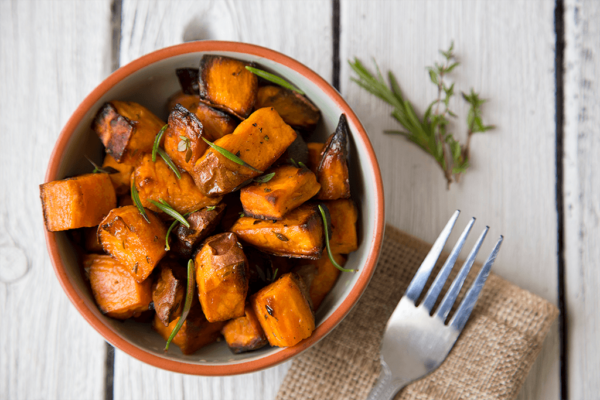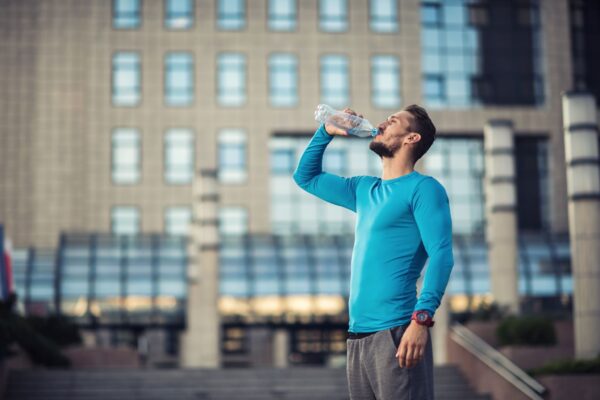Photo by Andrea Piacquadio from Pexels
Our modern lifestyles limit our sun exposure due to developments such as automobiles, television, computers, video games, and other technological devices which promote indoor activities over outdoor pursuits. When you throw in COVID-19 shelter-in-place orders in addition to the majority of companies allowing their employees to work from home, this only exacerbates the problem. Sunlight is the most effective way in which our bodies produce vitamin D, and according to the lower boundary of the U.S. lab range of 30 ng/mL, as many as 70 percent of Americans are considered vitamin D deficient.
Why is vitamin D important?
Vitamin D plays many roles in the body from maintenance of bone health to stimulation of insulin production to immune system function. Obviously, regarding COVID-19, the latter is of utmost importance. Vitamin D inhibits T-cell proliferation, inhibits the production of pro-inflammatory cytokines (signaling molecules that mediate and regulate immunity, inflammation, and hematopoiesis), and enhances the production of anti-inflammatory cytokines. So, how do the immune boosting properties of vitamin D effect COVID-19 infection?
What does the research say?
Although most studies have been observational, they suggest that individuals with higher serum vitamin D levels are more likely to be asymptomatic with COVID-19 infection (Grant et al., 2020). For example, one study measured vitamin D levels in COVID-19 patients who were admitted to the hospital with a positive RT-PCR test. Patients were broken up into two groups. Group A (n=91) included asymptomatic patients while group B (n=63) included patients requiring ICU admission due to severe COVID disease (Jain et al., 2020). Although the average vitamin D level in both groups was lower than the recommended range of 30 ng/mL, group A had an average level of 27.89 ng/mL while group B had an average level of only 14.35 ng/mL. Ninety of the total 154 patients in the study were deficient in vitamin D, and sixty-one of these ninety patients were critical while twenty-nine were asymptomatic. Additionally, of the sixty-two patients that were found to be severely deficient in vitamin D (10 ng/mL or below), fifty-two of them were critical patients. When fatality rates were compared between groups based on vitamin D deficiency, 21% of vitamin D deficient patients died while only 3.1% of patients with normal vitamin D levels died.
In addition to the many observational studies on vitamin D and COVID-19, recent interventional research documents that vitamin D supplementation can reduce the number of COVID-19 patients admitted to hospitals who require admission to the ICU (Castillo et al., 2020). Seventy-six COVID-19 patients were included in this study, and fifty of those patients were administered vitamin D supplementation (along with regular treatments) while twenty-six patients did not receive vitamin D supplementation (control group). Thirteen out of twenty-six patients not treated with vitamin D were admitted to the ICU while only one patient of the fifty treated with vitamin D were admitted to the ICU. No patients in the vitamin D group had complications, while two of the thirteen patients in the control group who were admitted to the ICU died. These are only two of fifteen studies that have investigated the connection between vitamin D and COVID-19 (Grant et al., 2020).
What can you do?
- Get your levels tested! This can be done through your primary care physician. It is recommended that you establish your current levels of vitamin D to determine proper supplementation.
- Increase your vitamin D levels
- The most effective way to get vitamin D is through 15-30 minutes of midday sunshine (10AM-2PM). Keep in mind that sunscreen blocks UV rays and in turn vitamin D production, so stay in direct sunlight up until the point which you require sunscreen to prevent burning (this varies depending on skin complexion).
- Although it is difficult to get sufficient vitamin D from food; foods rich in vitamin D include herring, bluefin tuna, trout, eel, mackerel, sardines, chicken eggs, beef liver and pork.
- One supplementation option is to take one teaspoon of cod liver oil per day to ensure adequate vitamin D intake. This is the best option, as cod liver oil also ensures adequate vitamin A intake as well as supplying a fat source to enable you to better absorb both vitamins A and D. You can also find vitamin D soft gels over-the-counter at most grocery stores.
As many, especially during winter months, choose to supplement vitamin D, it is important to know how to get the most out of supplementation. Vitamin D is a fat-soluble vitamin meaning that it is absorbed best in your bloodstream when paired with high-fat foods. Avocados, nuts, seeds, full-fat dairy products and eggs are nutritious sources of fat that help boost your vitamin D absorption.
Although vitamin D is not a miracle cure, there is emerging evidence supporting its efficacy in preventing severe COVID-19 infection. The best part? It is an inexpensive and harmless way to boost your immune function!
** Vitamin D can be toxic at high levels, so always be sure to consult with your personal physician prior to supplementing. It is recommended that you have your levels tested with your personal physician first to determine whether supplementation is warranted, and if so, what the dosage should be. Often vitamin D is toxic due to nutritional deficiencies in vitamins A and K (Kresser, 2008). Sources of vitamin K include leafy greens (broccoli, kale, spinach, Brussel sprouts, etc.), hard and soft cheeses, chicken, egg yolks, sauerkraut, butter and other fermented foods. Sources of vitamin A include soft and hard cheeses, beef and lamb liver, cod liver oil, king mackerel, salmon, bluefin tuna, and butter.
About the Author:
Grace Majchrowicz received her undergraduate degree in Exercise Science from Grove City College and her Master’s Degree in Exercise Science with a concentration in strength and conditioning from Indiana University of Pennsylvania. She has both designed and helped conduct research studies related to supplementation and performance, exercise and mood, and rest periods as they relate to gains in strength and power. Grace presented two of these research studies at the 2016 and 2017 Mid-Atlantic Regional Chapter meetings of the American College of Sports Medicine and is a published co-author in the Journal of Exercise and Nutrition. As a graduate assistant at Indiana University of Pennsylvania she provided personal training to local volunteer firefighters and performed fitness-based exercise testing for Pennsylvania Police Academy candidates. In her free time she enjoys hiking and spending time with her family.
References:
Castillo, M. E., Costa, L. M. E., Barrios, J. M. V., Díaz, J. F. A., Miranda, J. L., Bouillon, R., & Gomez, J. M. Q. (2020). Effect of calcifediol treatment and best available therapy versus best available therapy on intensive care unit admission and mortality among patients hospitalized for COVID-19: A pilot randomized clinical study. The Journal of steroid biochemistry and molecular biology, 203, 105751.
Grant, W. B., Lahore, H., McDonnell, S. L., Baggerly, C. A., French, C. B., Aliano, J. L., & Bhattoa, H. P. (2020). Evidence that vitamin D supplementation could reduce risk of influenza and COVID-19 infections and deaths. Nutrients, 12(4), 988.
https://chriskresser.com/vitamin-d-the-new-super-nutrient/
https://www.healthline.com/nutrition/best-time-to-take-vitamin-d#with-food
Jain, A., Chaurasia, R., Sengar, N. S., Singh, M., Mahor, S., & Narain, S. (2020). Analysis of vitamin D level among asymptomatic and critically ill COVID-19 patients and its correlation with inflammatory markers. Scientific reports, 10(1), 1-8.




